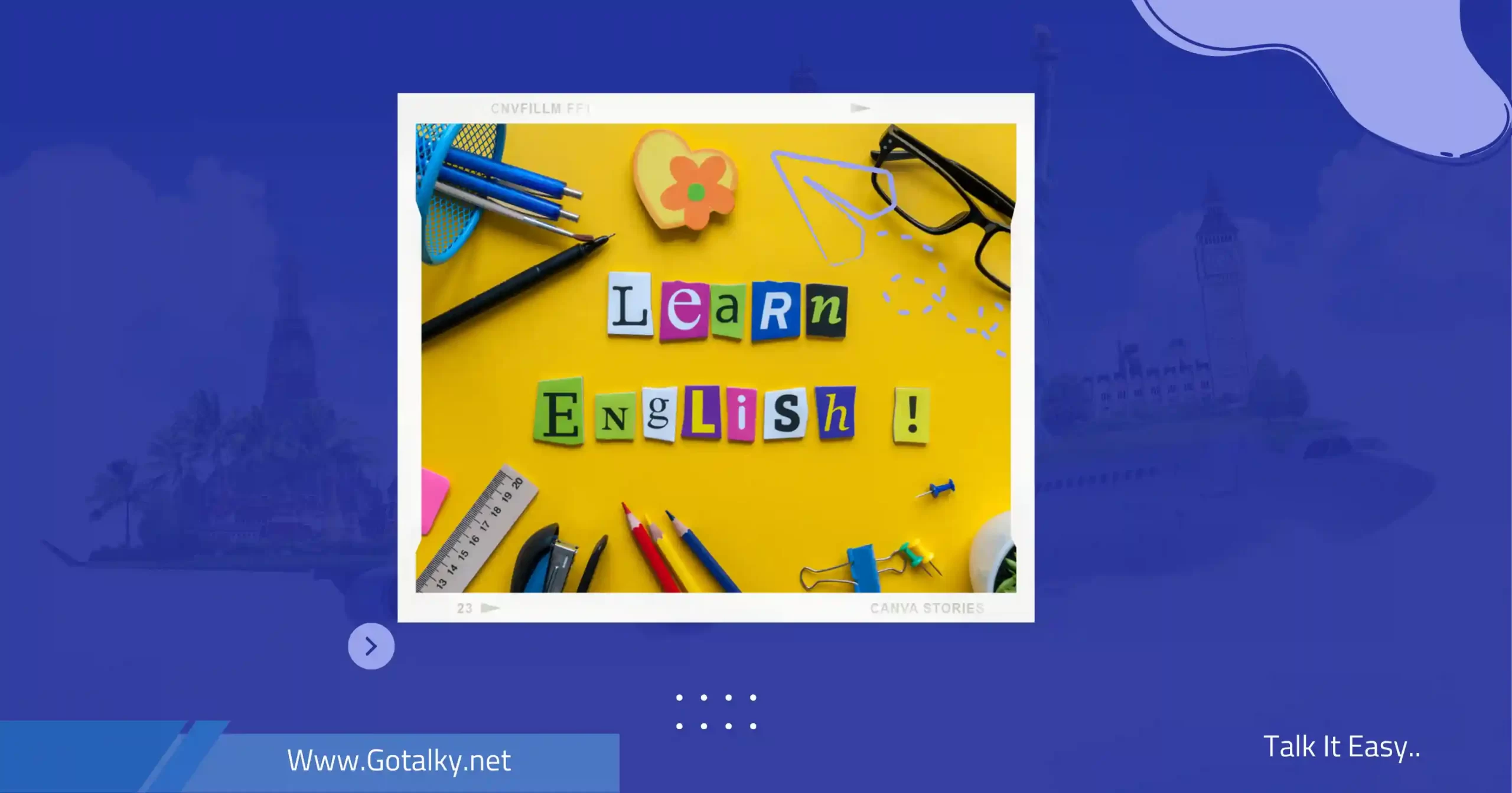With the increasing use of email in the workplace, electronic business messages have become a vital tool for communication and interaction with colleagues and clients. One of the crucial aspects to consider when writing a business email is how to conclude it appropriately and professionally. In this article, we will explore five important ways to improve the conclusion of your email in a manner befitting the business environment. Additionally, we will also discuss the role of the GoTalky platform in providing valuable tips and guides on this topic.
Concluding emails appropriately reflects your respect for the recipient and adds a positive tone to business communication. Through this article, we will review the five important ways to enhance the conclusion of your emails and provide valuable guidance from GoTalky to ensure a positive impact on your English-language electronic communication.
How to Write a Business Email in English
Here is an example of how to write a business email in Arabic, translated into English:
- First Paragraph:
Dear Mr./Ms. [Recipient’s Name],
I hope this email finds you well. I am reaching out to discuss [briefly mention the purpose of the email].
- Second Paragraph:
I would like to draw your attention to [provide detailed information or background related to the purpose of the email]. A [status or current challenge] has been recorded in this regard.
- Third Paragraph:
Furthermore, I would like to propose [suggest your ideas or solutions]. After careful consideration and analysis, I believe that [explain the reason for the feasibility and benefits of your suggestions].
- Fourth Paragraph:
Moreover, I would appreciate the opportunity [request a specific action or next steps]. It would be great if we could [mention the preferred course of action or meeting]. I am prepared to discuss this matter in detail and provide any additional information or documents required.
- Fifth Paragraph:
Please inform me of your thoughts or if there is a need for any additional information. I am available for a call or meeting at any time convenient for you. Thank you for your attention to this matter.
- Sixth Paragraph:
Best regards,
[Your Full Name]
[Your Position/Title]
[Contact Information: Phone Number, Email]
To make the message suitable for your specific situation, modify the above text according to the purpose of the email, the recipient, and the specific details of your circumstances. Adjust the phrases and terms to fit your workplace environment.
Tips for Concluding a Business Email from GoTalky
GoTalky stands out in several innovative aspects. Firstly, it employs a comprehensive educational methodology that focuses on the effective use of language in real-life contexts. The content is delivered through innovative and interactive methods such as educational videos, interactive exercises, and educational games, making the learning process enjoyable and stimulating. It also provides anyone who wants to improve English speaking with a variety of courses like the speaking English course, English speaking classes, the online English course, the English fluency course, spoken English lessons, the English speaking training, the advanced English course, the speaking and pronunciation course which is considered the best English speaking course and so much more.
When about to conclude a business email with a closing greeting from GoTalky, here are some tips that can help you find a suitable ending:
- Use a Professional Greeting: Choose a closing greeting that suits your business context, such as “Best Regards,” “Sincerely,” or “Warm Regards.”
- Express Gratitude to the Recipient: Thank the recipient for their time and attention, such as “Thank you for your time and cooperation on this matter” or “I would like to express my deep appreciation for your interest and collaboration.”
- Offer Your Availability: Express your availability for any additional inquiries or assistance, such as “If you have any questions or need further assistance, feel free to contact me” or “I am here to help at any time.”
- Include Additional Contact Information: Provide your contact information, such as phone number or email, to facilitate future communication, such as “You can reach me on my mobile at [phone number]” or “Feel free to email me at [email].”
- Use a Professional Signature: Don’t forget to include a professional signature with your full name, position, and essential contact information.
- End with a Greeting: Use a polite and professional closing greeting, such as “Best Regards” or “Best Wishes.”
How to Conclude an Email in English
Concluding an email is a crucial part that can have a significant impact, leaving a positive or negative impression on the recipient. It’s the moment when the sender deals with the recipient for the last time in their electronic message. It’s an opportunity to solidify the impression you want to leave and to express appreciation and respect. I will provide you with an introduction on how to write an effective and impactful conclusion in an email:
The conclusion in an email can be like the final touch to an artistic masterpiece. It’s the part that allows you to leave a good impression, reflecting your professionalism and personal ethics. As you approach the end of your email, you should consider some important points. The conclusion should be friendly and professional, thanking the recipient for their time and effort, and providing a clear signal that you are available for further contact or inquiries if appropriate. In general, the email conclusion should be courteous and refined, reflecting your appreciation and respect for the recipient.
How to Conclude an Email in English?
Closing an email effectively is a crucial part of the email communication process. It’s the moment where you leave your final impression on the recipient and can help in wrapping up the matters or achieving the purpose of the email. In this context, we will explore how to conclude an email in an effective manner in English.
How to Conclude the Message?
The conclusion is one of the key parts of the business email, considered important for several reasons. Firstly, it helps highlight your professionalism and respect for the recipient. It’s an opportunity to express your gratitude for the time and effort the recipient spent reading and interacting with your message.
Moreover, the conclusion can be utilized to clarify your availability for additional assistance or further inquiries. You can provide your additional contact information, making it easier for the recipient to establish future communication and get in touch with you at any time.
Common Questions
How to Write an Email Introduction in English?
When writing an introduction to an email in English, it should be brief, direct, and contain essential information that outlines the main purpose of the email. Here is a paragraph illustrating how to write an introduction for an email in English:
Dear [Recipient’s Name],
I hope this email finds you well. I am writing to [state the purpose of the email].
For example:
Introduce yourself and your reason for contacting: “My name is [Your Name], and I am reaching out to you regarding [subject/topic].”
Request or provide information: “I would like to inquire about [specific information] regarding [subject/topic].”
Formal Email Closing Phrases
When about to conclude a formal email, you can use the following phrases to write an appropriate and fitting closing:
“Thank you for your attention to this matter.”
“We appreciate your prompt response.”
“Please do not hesitate to contact us if you require any further assistance.”
“We look forward to hearing from you soon.”
“Your cooperation in this regard is highly appreciated.”
“We value your continued support and partnership.”
“Thank you once again for your time and consideration.”
“We remain at your disposal should you have any questions or concerns.”
“We trust that this information meets your requirements.”
“We extend our sincere gratitude for your cooperation in this important endeavor.”
Choose the phrase that suits the context and purpose of the message, ensuring to maintain a professional and courteous style in the closing.
How to Write an Email Subject Example?
Here is an example of an email subject:
“Subject: Invitation to the Company’s Annual Gala Dinner”
This is an example of a simple and clear subject that indicates the email’s topic, which is an invitation to attend the company’s annual gala dinner.




